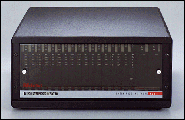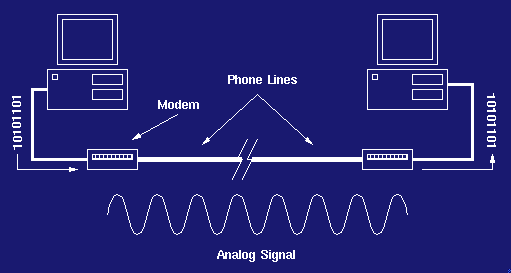The modem is a peripheral device for computers which allows 2 computers to communicate over standard phone lines.
Modems come in many shapes and sizes to serve all sorts of needs.
 
 
So how exactly does this common device work?
The word "modem" stands for "modulator-demodulator".
A modem's purpose is to convert digital information to analog signals (modulation), and to convert analog signals back into
useful digital information (demodulation).
You can't simply transmit bits directly across telephone lines. It first needs to be converted into sound waves.
If you've ever picked up your telephone while you were using your modem, you've no doubt heard a constant loud, screeching
noise. This noise is the sound of digital information after it's been converted to analog sound waves.

Modems constantly transmit a carrier signal. The carrier signal's function is, basically, to "carry" information from one place
to another.
Modem transmit information by varying, or modulating, this carrier signal.


| 


